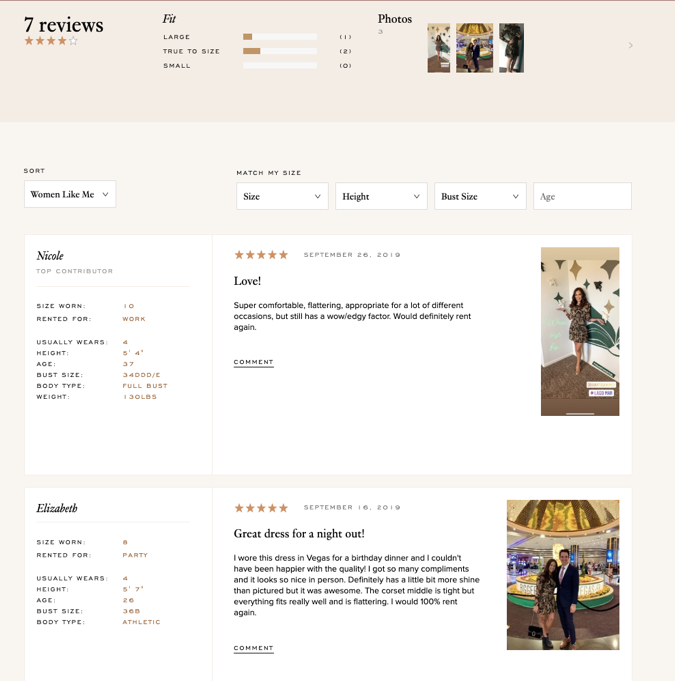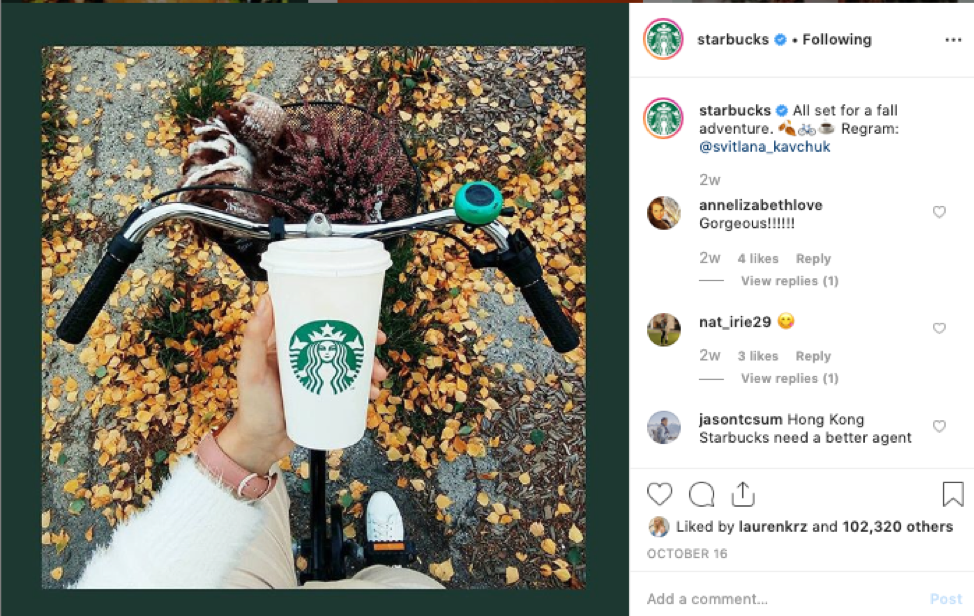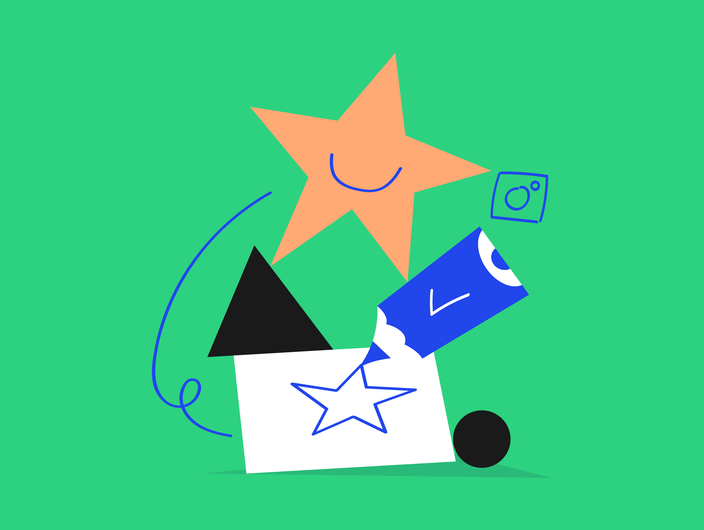User-generated content, also known as UGC, seems like just another trend that has hit the marketing world. With everything coming, it’s hard to decide what trends to take on and what to pass on. However, UGC is an influential form of authentic marketing that can better connect your customer base and provide a form of social proof for your potential clients.
You may see the benefit of user-generated content, but have no idea how to get started using it. After all, the whole practice is based on you asking your customers to provide you with free content. However, we’ve made it easy for you by sharing some sourcing best practices and tips on how to share it with your network.
Using user-generated content for your brand
Ready to get started with user-generated content? Along with bringing trust and authenticity to your brand, a UGC campaign can flood your marketing team with content that you can repurpose for collateral on different platforms. In this article, we’ll focus on UGC that is photos of your customer using your product. Although reviews and text-based content, such as blog posts, are considered UGC, photos are the easiest UGC to share on your Instagram business account and repurpose to add proof behind your brand.
Sourcing UGC from your customers
Unfortunately, collecting user-generated content is harder than simply just asking your customers for it. Your customer base is going to need a little bit of encouraging in order to share their pictures and content with the world. Below are a few methods to get user-generated content submissions
An email campaign
You’re likely to have an email list of your customers that have purchased from you before. By using an email marketing software like Moosend, you’ll be able to send a targeted email to this group requesting that they share a picture of them with your product on their social accounts.
This is a great method if you are just introducing UGC into your marketing playbook and are looking to get as much as you can at once. The more specific you are with targeting for this, for example targeting individuals that all bought one shirt you’re looking to promote, the better the chances you are to gain content rather than targeting your group at large.
Introduce a hashtag
Encouraging your customers to share content around your brand is as easy as introducing a hashtag users can use to indicate they are participating in your campaign. These hashtags should be specific to your brand and not already used by other social users.
Perhaps the most influential hashtag campaign to spread the word about a user-generated campaign is Calvin Klein’s introduction of #MyCalvins in 2014. The retailer created a whole campaign that showcases everyone from your peers to celebrities to athletes all rocking their Calvin Klein pieces.
The campaign still draws in posts and the brand has created a whole landing page highlighting the products shared (along with links to buy), people participating the campaign, and even shares photos from their Instagram account. They let their audience know they can potentially be shared if they tag their post #MyCalvins, therefore encouraging everyone to use the hashtag regardless of their following.
Once you’ve decided on a hashtag, make sure that you share it on your website, social platforms, and even in your emails newsletters that go out. Although a hashtag will probably just draw in new content rather than users sharing their older photos, it’s great since it can encourage users to post high-quality photos with the potential reward of being shared on social. Once you share those UGC photos on your social accounts, make sure that you’re using the hashtag as well and crediting the original content creator.
Ask for a tag
Another way to ask users for UGC is to ask that they tag you on social. When sending over an email notifying customers that their product has shipped, share your social media handles, with links directly to your accounts. By making the process simple to tag you, they’ll be more likely to share your product with their network and you. The harder it is to find you, your chances of being tagged go down.
When asking for a tag, it’s important that you clarify to your audience that this tag isn’t meaningless. Let them know that they could be shared on your social pages or even on your product pages on your website. A social media monitoring tool can help you easily track your mentions in a dashboard. If you do decide to use a piece, it’s important to ask the original creator for permission before sharing it. Simply just ask in a comment or message if they’re okay with you repurposing the image. It’s better to ask for permission than to ask for forgiveness and potentially isolate a loyal customer.
Incentivize it
If your brand is able to, incentivizing UGC can be an easy way to bring it in. Consider offering free shipping or a slight discount off of the consumers next order if they share a high-quality picture with you. Don’t offer something unreasonable that will harm the longevity of your business, but the incentive is an easy way to get the content from customers. They’ll feel as if they have a stake in the process and that they get something in return.
Sharing UGC with your audience
Once you’ve gathered UGC from your audience, it’s important that you use it. If these pictures just sit on your backed up drive, they aren’t doing any work to convince potential customers to purchase from your brand and not your competitor. Let’s make sure that you have the tools in your pocket to share this content with your audience.
Display them on your product pages
Adding user-generated content to your product pages adds proof to your product. It can help convince those on the edge to dive in and make the purchase. Users will be able to picture themselves with your product since they can clearly see their peers using it for similar uses. Additionally, it could provide inspiration for different uses of your product than what the customer originally thought.
Clothing rental service, RentTheRunway, has a whole section on each product’s page that allows for UGC to be uploaded and viewed. Customers are able to upload photos of how they styled each piece and give feedback on how the piece fit them depending on their measurements and sizing. This comes off as advice for the user and seems like a friend is telling them about the product and not just a stranger on the internet. The way that RentTheRunway formats this is great to enhance the community behind their brand.

Share them on your social accounts
Social media seems to be a natural place to share your user-generated content. It’s likely the place you’ll collect your UGC from, so it makes sense to reshare with your audience that may not have seen the original post. The photos you collect from social should be high quality, since users usually post the highest quality photos on their Instagram in order to best present themselves online.
Coffee giant, Starbucks, makes use of user-generated content on their Instagram account. The iconic logo is immediately recognizable and relatable by followers. In the photo below, they’ve reposted a photo from one of their followers. Not only is this photo pretty, but it highlights a fall aesthetic as the seasons are changing. In the caption, they give credit to the original poster, highlighting that others have the chance to get their photos shared by the brand as well. They aren’t calling for tags directly, but they’ve indicated that they’ll share with tags.

Sharing UGC shouldn’t seem out of the norm for your social accounts. If it’s too stark, it has the chance to isolate your followers and lead to people not engaging with the post or even potentially unfollowing your brand. Get creative in the way that you’re sharing UGC on your social channels. A normal post is an obvious use for your content, but you can also have a story and story highlight that can showcase your user-generated content. Find the way that works best for you. Plan and discuss everything with your team in Kontentino.
Modern marketing with user-generated content
Using user-generated content should seem natural for your brand. You will gain free content, engage your customers further, and even provide an authenticity behind your brand that may not have been there before.
When sharing UGC, it’s important to not throw your standards out the window and avoid common mistakes. Prioritize high-quality photos that are relatable to your audience rather than ones that are low quality. Give credit where it’s due. Don’t post too many similar photos. Make sure to post at the right time to make sure your post has a chance to be seen. Try to keep a variation in your feed to keep your audience engaged and avoid having them unfollow your account.
Even if you don’t share a customer’s user-generated content contribution, try to still engage with the piece. Throwing it a like or even a comment supports the user and makes them feel more valued as a customer. Prioritize your customers so that new customers know they’ll have a great experience with your brand.




